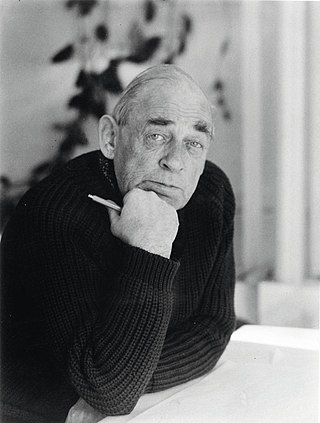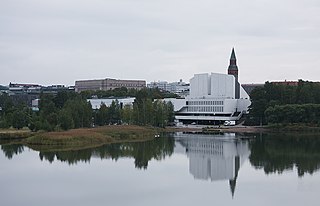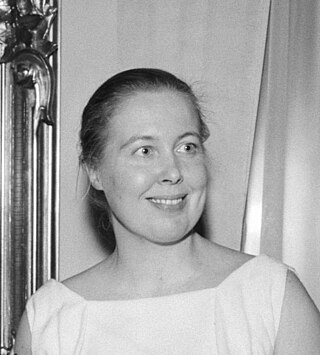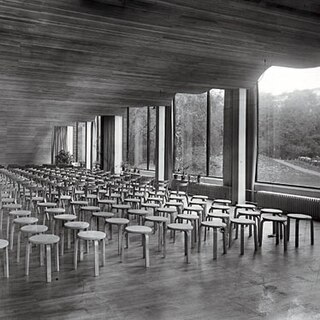
Hugo Alvar Henrik Aalto was a Finnish architect and designer. His work includes architecture, furniture, textiles and glassware, as well as sculptures and paintings. He never regarded himself as an artist, seeing painting and sculpture as "branches of the tree whose trunk is architecture." Aalto's early career ran in parallel with the rapid economic growth and industrialization of Finland during the first half of the 20th century. Many of his clients were industrialists, among them the Ahlström-Gullichsen family, who became his patrons. The span of his career, from the 1920s to the 1970s, is reflected in the styles of his work, ranging from Nordic Classicism of the early work, to a rational International Style Modernism during the 1930s to a more organic modernist style from the 1940s onwards.

Ekenäs is a town and former municipality in Finland that comprised the former municipalities of Snappertuna and Tenala together with the town of Ekenäs. It was merged with Pohja and Karis to form the new municipality of Raseborg on January 1, 2009. Ekenäs is in the province of Southern Finland, and is part of the Uusimaa region. The town had a population of 14,754 and covered a land area of 726.73 square kilometres (280.59 sq mi). The population density was 20.30 inhabitants per square kilometre (52.6/sq mi). The town is bilingual, with the majority being Swedish speakers (81%), and the minority Finnish speakers (17%).

The International Building Exhibition (Interbau) opened on July 6, 1957, in West Berlin's Hansa neighborhood. Situated in a park, Interbau showcased an array of designs by the foremost Western architects from 14 countries. It was to be a testament to Western values of freedom of expression where high and low-rise buildings merged seamlessly with the landscape and greenery.

The Finlandia Hall is a congress and event venue in the centre of Helsinki on the Töölönlahti Bay, owned by the City of Helsinki. The building, which was designed by architect Alvar Aalto, was completed in 1971. Every detail in the building is designed by Aalto. The designs were completed in 1962, with building taking place between 1967 and 1971. The Congress Wing was designed in 1970 and built in 1973–1975. In 2011, the building was expanded with new exhibition and meeting facilities. Finlandia Hall is known as the venue for the OSCE Summit held in August 1975, attended by 35 world leaders, including the leader of the Soviet Union, Leonid Brezhnev, and the President of the United States, Gerald Ford.

Elissa Aalto was a Finnish architect.

Paimio Sanatorium is a former tuberculosis sanatorium in Paimio, Southwest Finland, designed by Finnish architect Alvar Aalto. Aalto received the design commission having won the architectural competition for the project held in 1929. The building was completed in 1933, and soon after received critical acclaim both in Finland and abroad. The building served exclusively as a tuberculosis sanatorium until the early 1960s, when it was converted into a general hospital. Today the building is owned by Turku University Hospital but is not functioning as a hospital; rather, the building has functioned as private rehabilitation center for children since 2014. The sanatorium has been nominated to become a UNESCO World Heritage Site.

Vyborg Library is a library in Vyborg, Russia, built during the time of Finnish sovereignty, before the Finnish city of Viipuri was annexed by the former USSR and its Finnish name was changed to Vyborg by the Soviet authorities.
Philip Morton Shand, known as P. Morton Shand, was a British journalist, architecture critic, wine and food writer, entrepreneur and pomologist. He was the paternal grandfather of Queen Camilla.

The Nordic House in Reykjavík is a cultural institution opened in 1968 and operated by the Nordic Council of Ministers. Its goal is to foster and support cultural connections between Iceland and the other Nordic countries. To this end the Nordic House organises a diverse program of cultural events, exhibitions, seminars and activities & courses for children. It is the venue for several events in the Icelandic cultural calendar: the Reykjavík International Film and Literary Festivals, Iceland Airwaves and Design March.

The Aalto Theatre is a performing arts venue in Essen, Germany, and is home to the city's opera company Aalto-Musiktheater and the ballet company Aalto Ballett. The Essener Philharmoniker serve as the venue's orchestra. The theatre opened on 25 September 1988 with Richard Wagner's opera Die Meistersinger von Nürnberg and is mainly used for opera and ballet, but also for concerts and galas.

The Bremen Main Post Office Building or is a Neo-Renaissance building in Bremen, Germany, that used to be the Imperial Post Office for the Bremen area. The building stands on the city square named Domsheide.

The Alvar Aalto Museum is a Finnish museum operating in two cities, Jyväskylä and Helsinki, in two locations each, dedicated to architect and designer Alvar Aalto. All four locations are open to the public. They are:

Aalto Center is the administrative and cultural center of the City of Seinäjoki, Finland. It comprises six buildings, designed by Alvar Aalto and mainly completed between 1960 and 1968. The center represents one of Aalto's most important works and is notable in Finland and even internationally as an architectural whole. The wooden plan of the center is in the collections of the Museum of Modern Art in New York.

Aalto University Undergraduate Center is a building designed by the Architect Alvar Aalto. Originally the building was designed to serve as the main building of the Helsinki University of Technology. Today it is one of the main buildings of the Aalto University's campus in Otaniemi, Espoo.

Stephanuskirche also known as Detmerode Church is a church and parish center in Wolfsburg, Germany designed by Finnish architect Alvar Aalto in 1963. Completed in 1968, the building is a prominent example of International modernism in Germany.

Church of the Holy Spirit is a Lutheran church and parish center in Wolfsburg, Germany. The building is a notable project of Finnish architect Alvar Aalto.
The Aalto Centre is an urban area milieu in the city of Rovaniemi, in the Finnish Lapland, designed by the renowned Finnish architect Alvar Aalto, comprising the city's key administrative and cultural buildings.

The Alajärvi administrative centre is a buildings complex in the town of Alajärvi, Finland, comprising the town hall and related offices, health centre, parish hall and other buildings. It was designed by Finnish architect Alvar Aalto, who also designed the adjacent library building.
The Alvar Aalto Cultural Centre is a cultural venue in the city of Wolfsburg, Lower Saxony, Germany, designed by the renowned Finnish architect Alvar Aalto in 1958 and inaugurated in 1962. It comprises a library, educational and youth facilities, municipal offices and retail premises.

Vahr is a district of Bremen and belongs to the Bremen district East.


















